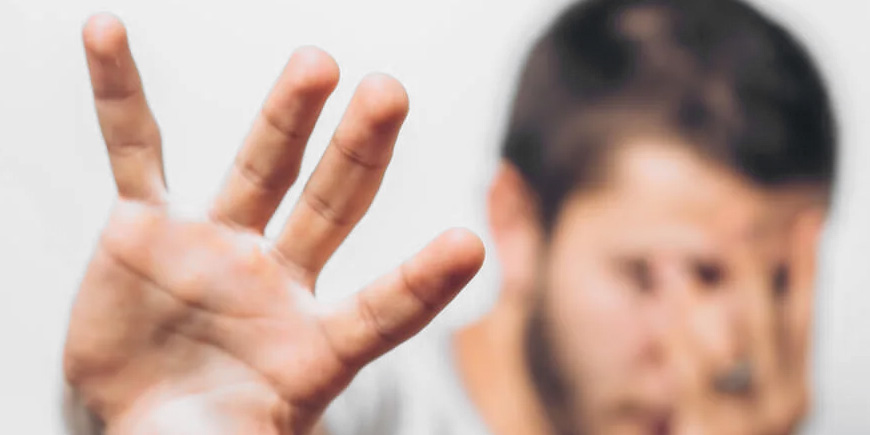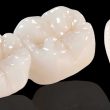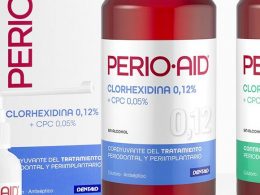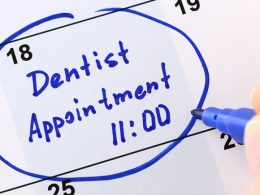Table of Contents
Facial trauma are impacts suffered to the face due to a violent act, such as a ball hit, a car accident, or a fall from a bicycle. In mild cases, a trauma usually does not have important consequences, but in the case of big impacts, the sequelae can be disastrous; including jaw fractures and tooth loss.
Traumatic dental and maxillofacial injuries are common and affect approximately 20% to 30% of permanent dentitions worldwide, often with serious aesthetic, functional, psychological and economic consequences.
With such a high incidence of injuries, prevention of trauma to the maxillofacial region becomes a primary goal. The preventive approach is based on the identification of its main causal factors and on the application of measures designed to avoid them or reduce their impact.
This article reviews the etiology and preventive strategy of dental trauma injuries and examines the manufacture and usefulness of certain protective devices, especially those for oral use.
Prevention Strategies to Avoid Dental Trauma
Several epidemiological studies have examined the etiology of these lesions. However, only a few have offered information about the preventive measures that could be instituted to avoid them.
Apparently, injuries in those older than 7 years occur more frequently during sports activity. Fortunately, sport is the activity for which preventive measures appear to be feasible and are often effective in reducing the frequency and severity of oral trauma.
Traffic accidents are the next most frequent cause of buccal trauma, and here too preventive measures are very feasible to avoid or reduce the consequences of severe impacts. Always wear a seat belt, equip the vehicle with air bag systems and avoid drinking alcohol while driving; are measures capable of reducing dentofacial trauma of this type by up to 80%.
A significant number of oral and dental injuries are the result of contact sports such as football, basketball, rugby, soccer, boxing, wrestling, or “stick sports.” However, there is increasing evidence that oral and dental injuries occur as often or more frequently during children’s play or leisure activities. For example, in a recent study in our country, almost half (48%) of the 1,275 injured infants, were reported as events that occurred during school hours.
Sports and traffic accidents were less frequent in the sample. Accidents in organized sports practice represented only 8% of the total injured, similar to the number of people affected by acts of personal violence. The researchers concluded that probably only a third of the injuries could have been prevented.
Another foreign study yielded very similar results from a sample of 3,655 reports made to a major Danish insurance company. In it, 7% of the reports of dental trauma were due to the practice of organized sports, while 93% to other varied and unavoidable causes. In both studies, the researchers concluded that it is not easy to prevent dental injuries, nor to create reliable guidelines for their prevention.
Based on these studies, it seems that promoting the use of mouth guards and face masks during sports practice, is insufficient to improve the statistics of those injured by these traumas.
Education As the Best Tool
The best strategic measure to prevent dental and oral injuries, is probably education. Education must be directed equally to children, adolescents and adults, as well as to parents, teachers and community leaders; particularly in high incidence regions.
Information should be provided on how to avoid injuries and how to handle them, preferably at the scene of the incident. This education should be aimed at both sexes equally, although the male sex is always a little more prone to trauma.
Special strategic measures should be attempted for high-risk individuals, such as those with severe maxillary protrusion or mandibular hypoplasia (protruded teeth), as the chances of severe dental trauma have been shown to be closely related to this type of skeletal malocclusion. In these cases, it is even recommended to complete orthodontic treatment in mixed dentition, before the age of 11; to reduce the risk of fracture of the upper incisors.
In addition, it is advisable to give special advice to people with a history of previous oral trauma, as they will be more likely to suffer a new injury, compared to those who have never experienced one. The risk of multiple injuries has been reported to be 8.4 times higher when the first traumatic episode occurred before the age of 9, compared to those after the age of 12. Therefore, young children should receive special attention.
Information campaigns, either through television, newspapers or through the distribution of brochures and posters; are also useful strategies for the prevention of traumatic dental injuries. All children should know the first aid relevant to this type of injury. Maneuvers such as attempting to reimplant an avulsed tooth immediately or, alternatively, storing it in milk or under the tongue before running home for help, should be common knowledge.
Not only should children be educated about dental trauma, but also those who care for them, especially those who are responsible for their safety during school and organized activities. In most cases, a simple instruction sheet, is sufficient to ensure that injured patients receive adequate emergency care at the scene of the accident.
Appliances to Prevent Dental Injuries
Traumatic impacts cause an acute accumulation of kinetic energy that is released on the hard and soft tissues of the mouth, resulting in laceration, contusion, or fracture of the same. Protective devices (such as mouth guards) to reduce the effects of impacts, can act by preventing their forces from reaching the oral region; or by cushioning, absorbing and distributing those forces over a much larger surface area.
During sports and other activities where there is a risk of falling or being struck by an object, wearing a face shield or mouth guard appears to be the only way to prevent, or at least significantly reduce, the severity of dental injuries.
It has been reported that prior to the mandatory mandate to wear face protectors and mouth guards in American high school football in the United States, facial and oral injuries accounted for up to 50% of all reported injuries in that sport. After the mandate, a very significant decrease in injuries suffered was observed, of up to 90%.
Another common mechanism of oral injury is traffic accidents. The use of a seat belt in the car and a helmet with a chin guard when riding a motorcycle, is mandatory in many countries. The most widely used cycling helmets provide good protection against head injuries, as demonstrated in Victoria, Australia, when after 1 year of mandatory use, there was a 48% reduction in head injuries in cyclists. Unfortunately, these same helmets do not offer oral or dental protection.
Face Guards
A face guard is usually a kind of prefabricated metal or composite cage, which is attached to a helmet or head strap. Protectors made of clear polycarbonate plastic are available now, either prefabricated or custom-made. These face guards appear to provide good protection to the face and teeth, but they are not applicable to all activities and, in many cases, they do not protect the teeth if the individual receives a blow under the chin.
With the advent of many new fiber-based compounds, custom-made face guards have become popular and very affordable. However, more studies must be carried out to confirm their benefits.
Mouth Guards
Mouth guards or sports splints are two different names for the same thing: a device that is placed over the teeth to protect them from blows and trauma. Mouth guards are an important piece of sports equipment for anyone who participates in a sport that involves falls, body contact, or high speeds. This includes soccer, basketball, baseball, football, hockey, skateboarding, gymnastics, mountain biking, motorcycling, and any other activity that could result in an oral injury.
Mouth guards generally cover the upper teeth and are specially designed to prevent dental fractures, lip cuts, and other damage to the mouth. If the patient wears orthodontic or fixed maxillary orthopedics appliances, the Dentist may suggest a special custom design.
Function of Mouth Guards
It has been suggested that a mouth guard should protect its wearer against injury in four different ways:
- Absorbing and deflecting the blows that are directed towards the teeth.
- Protecting the lips, tongue and gingival tissues from laceration.
- Preventing the teeth of both arches from coming into violent contact.
- Providing the jaw with elastic support that absorbs impacts and prevents fractures of the condyle and mandibular angle.
What Are the Different Types that Exist?
Regardless of the type of mouth guard that is chosen, it should be comfortable and resistant. It should also fit properly and not restrict speech or breathing. The three basic types of mouth guards are:
- Custom-Made Mouth Guards They are individually designed and manufactured in your Dentist’s office or in a professional dental laboratory. As you might expect, they provide the most comfortable fit and the best protection. The Dentist takes an impression of the teeth and then builds the mouth guard on a plaster model. Because they fit and feel better, most high performance athletes prefer these custom mouth guards. However, they are also the most expensive.
- Preformed Guards They come in a pre-shaped presentation that can be altered by boiling the appliance in water and then biting into the warm plastic and adjusting it to the patient’s mouth. They can be purchased at many sporting goods stores and may offer a better fit than stock mouth guards. If you choose this type, follow the instructions carefully to avoid ending up with a deficient and poorly fitting mouth guard.
- Prefabricated or Stock Mouth Guards They are inexpensive and come preformed, ready to use. Unfortunately, they often do not fit very well. They can be bulky and make breathing and speaking difficult.
Fabrication of the Appliances
Organizations such as the World Dental Federation (FDI) have stipulated and published specific criteria for the construction of an effective mouth guard. Most of these recommendations state the same thing:
- It must be made of a resistant material that can be easily washed, cleaned and disinfected.
- It must have adequate retention to remain in position during sports activity and allow a normal occlusal relationship, in order to provide the maximum possible protection.
- It must absorb and disperse the energy of a blow or impact, covering the upper dental arch, excluding interferences, reproducing the occlusal relationship, allowing mouth breathing and protecting soft tissues.
In addition, the FDI also recommends that Dentists manufacture mouth guards from an impression of the athlete’s teeth, that is, that they be 100% personalized.
How Often Should They Be Replaced?
Ideally, mouth guards should be replaced after each season, because they can wear out with use and lose their fit. Replacement is especially important in teens, as their mouths continue to grow and teeth continue to develop until adulthood.
Many athletes have new mouth guards made every 6 months, when they go for their regular dental check-up and cleaning.
“The Use of a Mouth Guard During the Practice of Contact or High Risk Sports, Is One of the Most Important Actions in Preventive Dentistry”.
DENTAL TIP
Save Up to 70% on Your Dental Quote!
Never forget that dental tourism is an extraordinary tool for accessing top-notch Dentistry.
DENTAL VIP trusts that quality of dental care should be affordable to all, no matter where you live. Hundreds of patients come to Venezuela for state-of-the-art medical and dental care every year, saving large amounts of money on health. Our rates are significantly lower than in any other Latin American country, without it implying a decrease or compromise in the quality of service. Simply what happens is that property costs and salary levels are both much lower than in any other place, which translates in better offers for our patients.
We guarantee that by using the services offered by DENTAL VIP, you could save up to 70% on your dental quote, compared to the local rates stipulated in your country.
Come for the price and stay for the quality! Contact us today via WhatsApp +58 414-9033547 or Email and overcome once and for all any barrier that prevents you from show off a white, healthy and beautiful smile.












